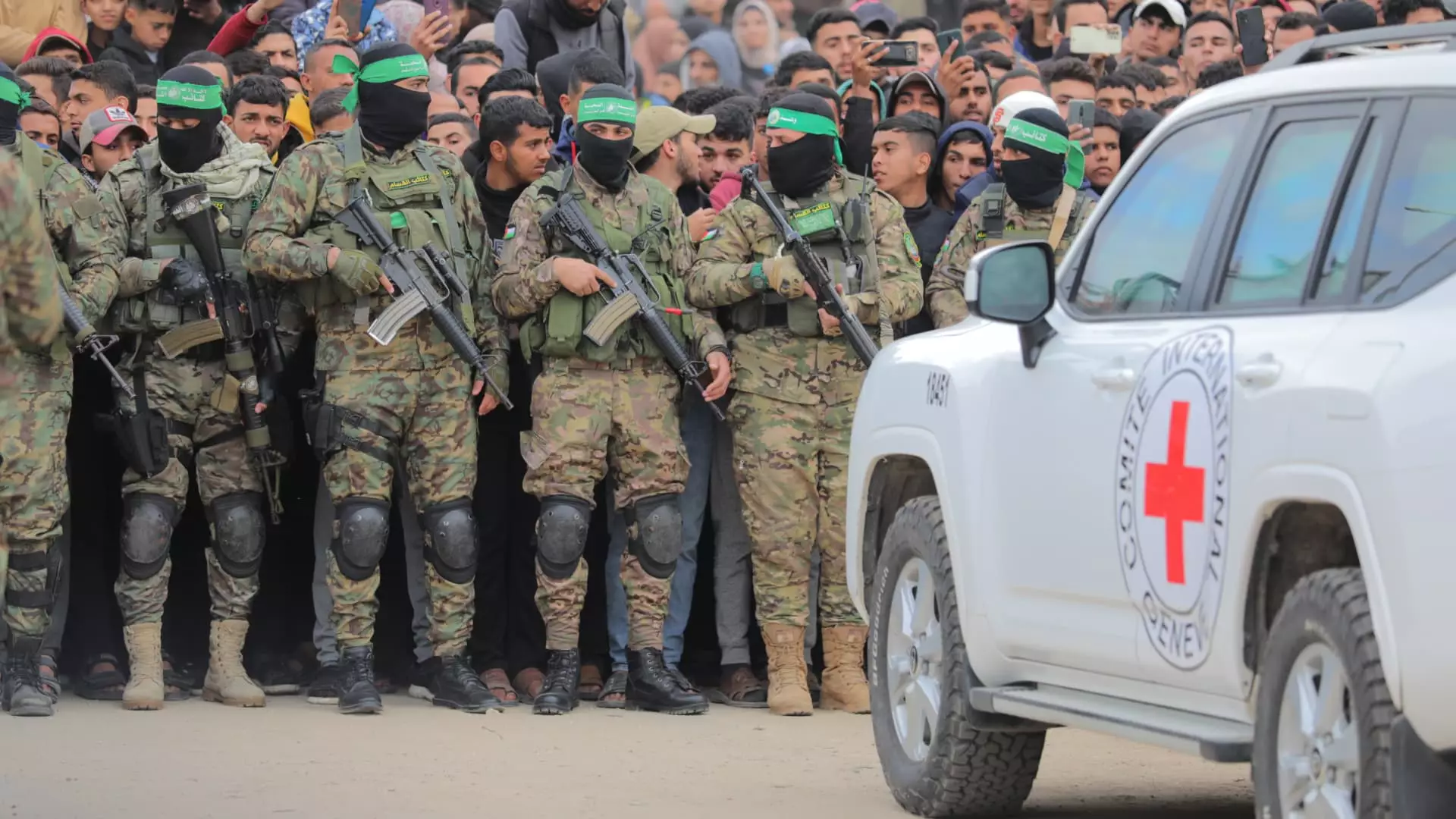On a recent Saturday, the Palestinian militant organization Hamas facilitated the release of three Israeli hostages, an event that has stirred deep emotional responses across the region. These men, who appeared visibly weakened and emaciated, were part of a complex and strained ceasefire arrangement aimed at alleviating the ongoing conflict that has been ravaging Gaza for the past 15 months. The release was broadcasted live, further amplifying the impact of their frail condition on the public and serving as a stark reminder of the harsh realities of war.
The hostages, Ohad Ben Ami, Eli Sharabi, and Or Levy, were taken captive during the Hamas-initiated assault on October 7, 2023, which marked a pivotal shift in the ongoing Israeli-Palestinian tension. Their extraction from captivity was characterized by a well-controlled transfer operation led by Hamas militants. The spectacle was underlined by an intense atmosphere of militarization, as armed fighters flanked the hostages while they were shown to the public. This presentation raises questions about the human element in such exchanges and the psychological toll on those involved, both the hostages and their families.
Families of the hostages have experienced an emotional rollercoaster throughout this tumultuous ordeal. For many, the release signified both hope and heartbreak. For example, Sharabi’s family is left to grieve the loss of his wife and daughters during the initial attack, emphasizing the irrevocable impact of violence on individual lives. The juxtaposition of jubilation at the return of loved ones, tainted by the scars of trauma and loss, paints a deeply complex emotional landscape.
Hostage situations often blur the lines between political maneuvering and personal suffering. The emotional strain of not knowing a loved one’s status for over a year can lead to severe psychological distress among families, exacerbated by the dramatic public displays often employed in these negotiations. There is a palpable tension between the need for political leverage and the human stories that lie behind these statistics.
In the broader context, the hostage release is part of a ceasefire agreement that has thus far managed to stave off further escalation. Although the situation is precarious, the 42-day ceasefire, supported by U.S. mediation and backed by neighboring influential powers like Egypt and Qatar, has fostered a rare moment of respite. However, the fragility of such agreements cannot be overstated.
Under the terms of the ceasefire, Israel has agreed to release 183 Palestinian prisoners, some of whom have been convicted of serious attacks, in return for the release of the Israeli hostages. The element of reciprocity in such exchanges raises profound ethical questions as both sides navigate the tumultuous waters of conflict resolution. The negotiations for subsequent phases promise to be even more complex, especially as additional hostages are sought for return, alongside broader discussions about troop withdrawals and a potential cessation to hostilities.
Interestingly, recent comments by U.S. President Donald Trump, suggesting the relocation of Palestinians from Gaza as a means to develop it into a prosperous enclave, have sparked backlash from Arab nations and Palestinian groups. Critics argue that such proposals echo sentiments of ethnic cleansing, further complicating the already sensitive situation. The response from the Israeli government, which appears to favor Trump’s controversial suggestion, illuminates the diverse and often contradictory narratives that underpin the conflict.
As the citizenry of both Israel and Gaza endure the consequences of violence, the future remains uncertain. The hope for peace, reconciliation, and stability hangs precariously in the balance, dependent not just on the release of hostages and prisoners, but on the will of leaders to pursue genuine dialogue and humanization amidst political posturing.
The release of the three Israeli hostages sheds light on the dire realities faced by individuals caught in the crossfire of long-standing conflict. As negotiations evolve, both sides must grapple with the ongoing human cost of their decisions. Understanding the intricacies of hostage exchanges and ceasefire agreements becomes essential for fostering a lasting peace. In the end, hope persists, despite the overwhelming odds, that progress can be made towards a future where the need for hostage exchanges becomes an archaic memory rather than a recurring theme in the narrative of the Israeli-Palestinian conflict.


Leave a Reply